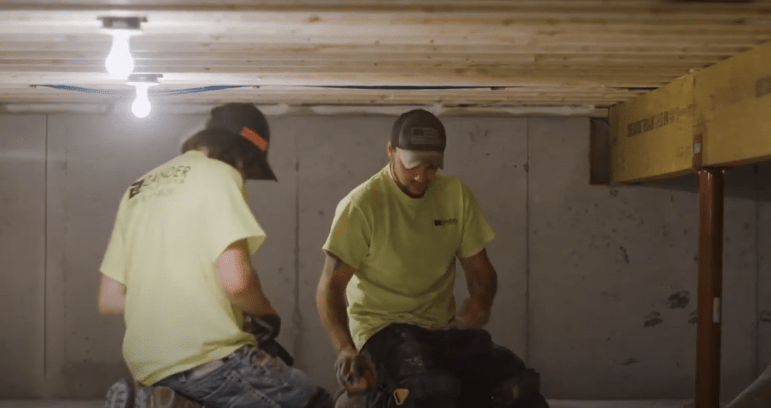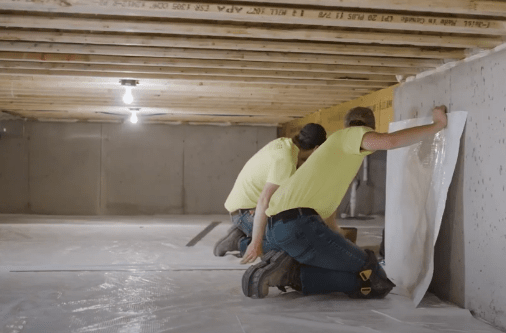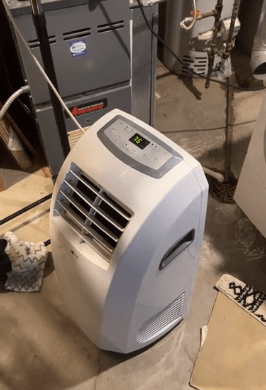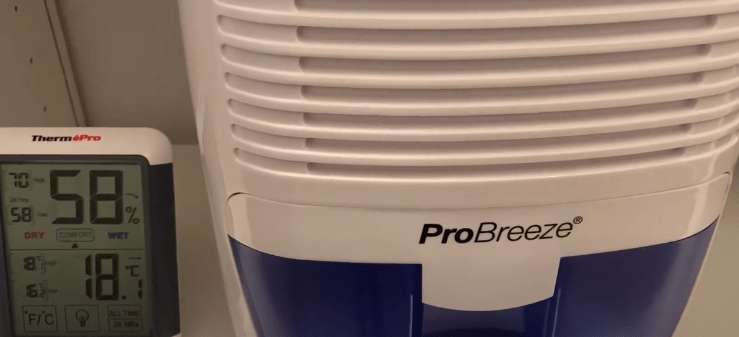Imagine waking up in the morning, feeling a heavy, damp atmosphere in your home, and wondering how it’s affecting your health.
Hi there, I’m Mannan Wasif, and I’ve been sharing information for the last few years. I know what it’s like to grapple with the discomfort and potential health risks of excessive humidity in your living space. That’s why I’m here to share some valuable insights on dehumidifiers, the tricks to make them work effectively, and how to overcome the challenges they pose.
So, let’s dive right in and explore the world of crawl space dehumidification together.
Before we embark on this journey, let me introduce myself a bit further. I’m your companion in the battle against humidity-related woes. Over the years, I’ve encountered various problems related to dehumidifiers, just like you. From mysterious odors emanating from crawl spaces to concerns about the health implications, I’ve faced them all.
Today, I’m not just here to discuss these issues but to provide you with practical solutions that can make your living environment healthier and more comfortable.
How to install dehumidifier in crawl space?
Here are a few ways that can give you the answer to how to install crawl space dehumidifier?
In a subarctic region, a study examined crawl spaces in Northern family homes, prone to mold and moisture issues. Results revealed that using a dehumidifier maintained humidity below critical levels, preventing mold growth throughout the year. However, a naturally ventilated crawl space with an ACR of 1.5 showed an increasing mold risk between years.
1. Location

When deciding where to place your crawl space dehumidifier, keep in mind that it should be in an area with good air circulation. While it’s unlikely that many people will venture into your crawl space, you’ll still need easy access for adjustments and maintenance. Ensure that the dehumidifier is installed where it can efficiently discharge air.
2. Create a Level Foundation

Crawl space floors are often not level, so preparing a stable foundation for your dehumidifier is essential. This typically involves using concrete blocks or similar materials to create a level base. Additionally, make sure the drain pan is also level to prevent water from pooling.
3. Consider Crawl Space Dehumidifier Ducting

Every crawl space is unique, and if yours has dividers or an irregular shape, you might need a ducting kit for your dehumidifier. This kit helps channel the discharged air away from the unit, improving overall efficiency in drying the space.
Using an insulated flex duct can also help with noise control. For guidance on the best ducting options, consult the dealer where you purchased the unit.
4. Managing Dehumidifier Water

Since dehumidifiers pull excess water from the air, you need a system to manage the water collected. Gravity draining is the most common method in crawl spaces. Most basement and crawl space units come with gravity-draining capabilities.
Connect the drainage hose or PVC pipe to the drain fitting, and ensure it leads to a sump pump or floor drain for proper disposal.
5. Set Up a Hygrometer

While your new crawl space dehumidifier is self-sufficient, maintaining humidity levels between 50-60% in crawl spaces requires monitoring. A wireless hygrometer is an excellent solution that eliminates the need to enter the crawl space for routine checks.
For more advanced monitoring, consider using data loggers placed in crawl spaces, which record temperature and humidity at different intervals and can be accessed remotely through a computer.
Tips for Installing a Dehumidifier in a Crawl Space
Here are the tips for Installing a Dehumidifier in a Crawl Space:
- Assess the Size: Determine the size of the crawl space and choose a dehumidifier that is appropriately sized for the space. The dehumidifier’s capacity should match the square footage and moisture level in the area.
- Location Matters: Place the dehumidifier in a central location within the crawl space. Ensure it is elevated or wall-mounted to keep it off the ground, which can be damp and muddy.
- Drainage: Set up proper drainage for the dehumidifier. You can use a gravity drain, a condensate pump, or a floor drain if available. Make sure the drainage system has a clear path for water to flow away from the crawl space.
- Ventilation: Ensure proper ventilation in the crawl space. Ventilation helps in circulating air and preventing stagnation, which can lead to moisture buildup. Install vents or fans if necessary.
- Sealing: Seal any openings, cracks, or gaps in the crawl space to prevent outside air and moisture from entering. This includes sealing around pipes, ducts, and vents.
- Electricity: Ensure there is a reliable source of electricity in the crawl space, and install the dehumidifier according to local electrical codes and safety standards.
- Maintenance: Regularly clean and maintain the dehumidifier by emptying the water collection bucket or checking the drainage system. Clean or replace filters as needed.
Reasons for Installing a Dehumidifier in Your Crawl Space
If you’re wondering why you should install a dehumidifier in your crawl space, here are some compelling reasons:
1. Energy Efficiency
Dehumidifying your crawl space can have a positive impact on the overall energy efficiency of your home. By maintaining optimal humidity levels, you’ll reduce the need to crank up your air conditioner, ultimately leading to significant savings on your energy bill. Say goodbye to excessive humidity and hello to a more comfortable living environment.
2. Health
Your home’s indoor air quality is closely linked to the crawl space through a phenomenon known as the stack effect. This means that the air you breathe in your home may originate from the crawl space, and if it’s laden with allergens, it can lead to health issues like respiratory problems, headaches, eye irritation, and various other ailments. Installing a dehumidifier can effectively mitigate these indoor air quality concerns, promoting better health for you and your family.
3. Comfort
Maintaining a lower humidity level in your home is a win-win situation for both your well-being and your budget. Say goodbye to the discomfort of feeling sticky and hot. Enjoy a good night’s sleep or work in a comfortable environment without the hindrance of excessive moisture.
With dry air, you’ll also find that you can set your thermostat a bit higher without feeling the heat, which translates to more savings.
4. Structural Stability
Think about the crucial wooden components in your crawl space, such as supports, studs, joists, and rafters. When humidity levels surpass 70%, moisture starts to infiltrate the wood, potentially causing structural deterioration.
To safeguard the integrity of these vital support structures, a dehumidifier is your go-to solution. It effectively removes excess moisture, ensuring the longevity and durability of the wood.
Troubleshooting Tips
Here are the troubleshooting tips for installing dehumidifiers in crawl spaces:
- Inadequate Dehumidification: If the dehumidifier doesn’t seem to be lowering the humidity levels adequately, it may be undersized for the crawl space. Consider upgrading to a larger unit.
- Noisy Operation: Dehumidifiers can be noisy. Ensure it’s properly mounted and placed on a solid surface to reduce vibrations and noise. If noise persists, consider soundproofing or using a quieter model.
- Water Drainage Issues: If the drainage system is not working correctly, check for clogs or obstructions in the drain hose. Ensure the hose has a proper slope to allow water to flow away.
- Freezing Coils: In colder climates, the dehumidifier’s coils may freeze. This can happen if the crawl space is too cold. You may need to insulate the unit or install a dehumidifier designed for low-temperature operation.
- Short Cycling: If the dehumidifier turns on and off frequently, it may be due to improper sizing or a faulty humidity sensor. Consult the manufacturer’s instructions or seek professional help.
- Odors: If the crawl space has a musty odor, it may take some time for the dehumidifier to remove all the moisture and eliminate the smell. Keep the dehumidifier running continuously until the odor is gone.
Regular Check-ups: Schedule periodic checks on the dehumidifier to ensure it’s working optimally. Check for leaks, unusual noises, or signs of wear and tear.
Why Does Crawl Space Humidity Matter?
Crawl space humidity may not be a topic that’s top of mind, but understanding its importance is crucial for maintaining a healthy home environment. Let’s break it down in simple terms:
1. The Air Circulation Connection
Picture this: The air within your home has a natural tendency to rise, carrying with it the air that previously occupied your crawl space. But what’s lurking down there? More than just moisture and mold spores, your crawl space can harbor various airborne contaminants.
As warm air ascends, it creates a replacement air stream, which is drawn through the crawl space vents. Unconditioned outdoor air sneaks in through vents and other openings, much like how a chimney draws air from below. This phenomenon is known as the “stack effect.”
2. The Path to Indoor Air Quality
Here’s where it gets crucial: Since the lowest part of your home typically has the poorest air quality, anything present in the crawl space eventually finds its way into your living spaces. In fact, on the first floor of your home, nearly half of the air originates from the crawl space.
3. The Perpetual Moisture Challenge
Crawl spaces with open vents can be moisture magnets. While the surface soil might seem dry, a few inches below, it’s a different story – it’s moist. This constant release of moisture throughout the crawl space can be relentless.
Conclusion
Installing a dehumidifier in your crawl space is a smart move for energy efficiency, health, comfort, and structural stability. It not only helps you save on energy bills but also ensures a healthier living environment by mitigating indoor air quality concerns.
Furthermore, it safeguards the integrity of essential support structures in your crawl space. Understanding the importance of controlling crawl space humidity is essential for maintaining a healthy home environment, as it affects air circulation and indoor air quality. Don’t overlook this crucial aspect of home maintenance.

He is a mechanical engineer & our expert team member with over four years of experience who provides comprehensive and informative guides on various home improvement topics. From DIY projects to professional installations, he strives to give readers the knowledge and tools they need to make informed decisions and successfully complete their home improvement projects.
His goal is to empower homeowners to create the home of their dreams, while also increasing the value and functionality of their property. Whether you’re a first-time homeowner or a seasoned renovator, he has something for everyone.
